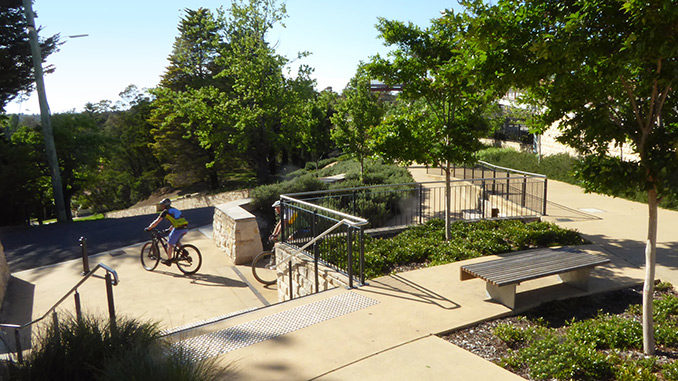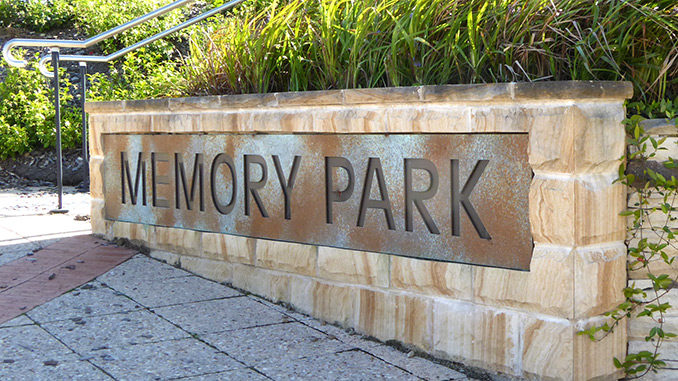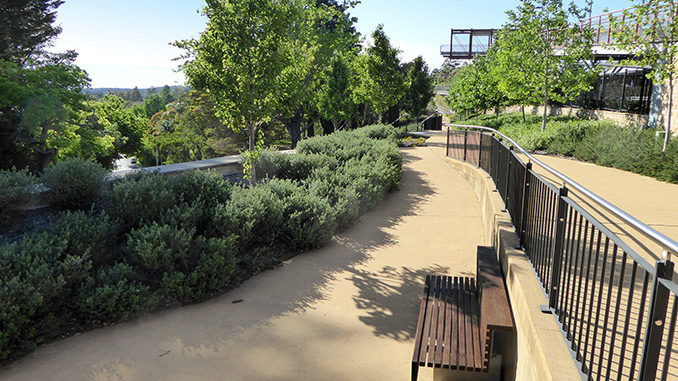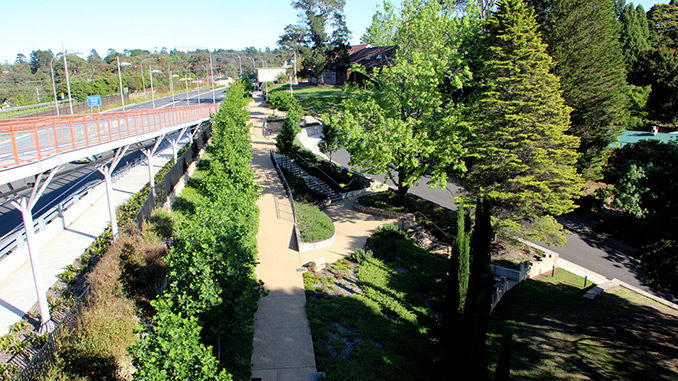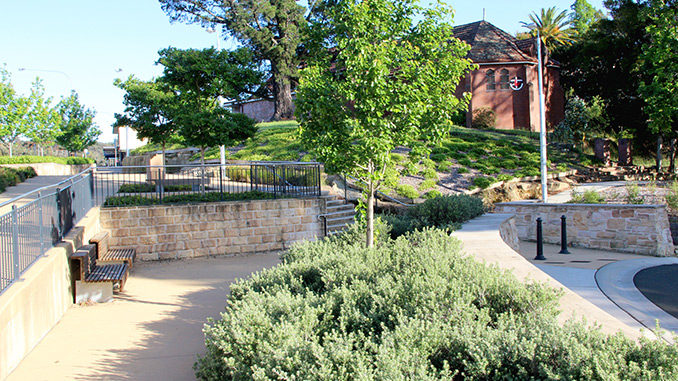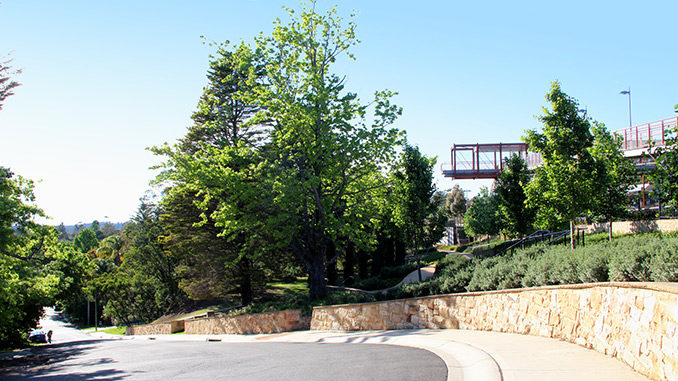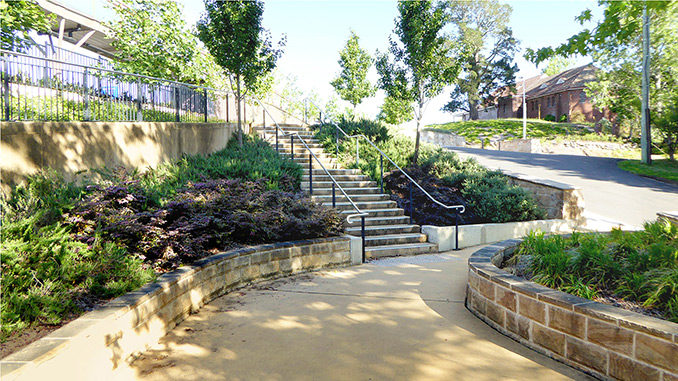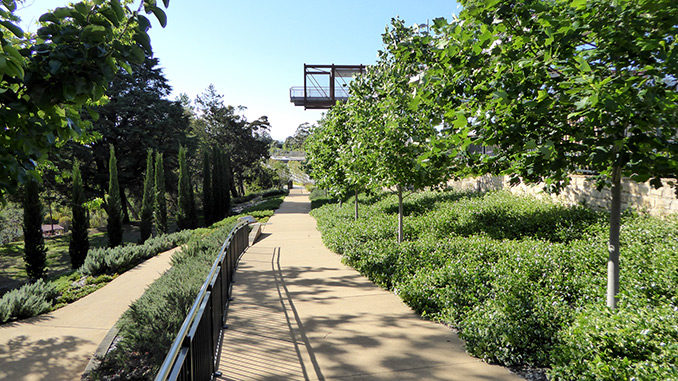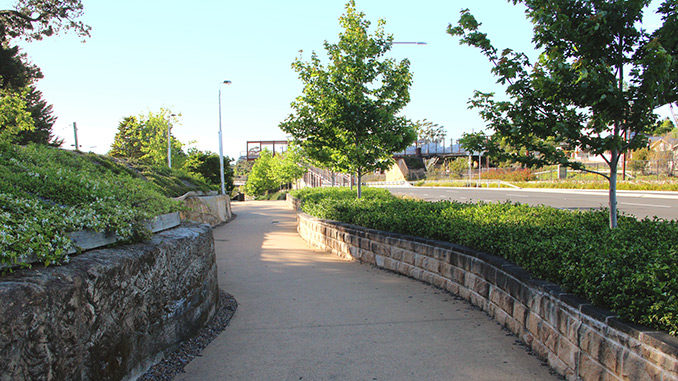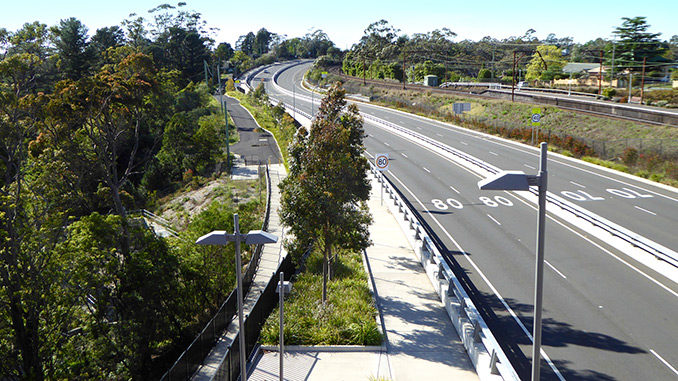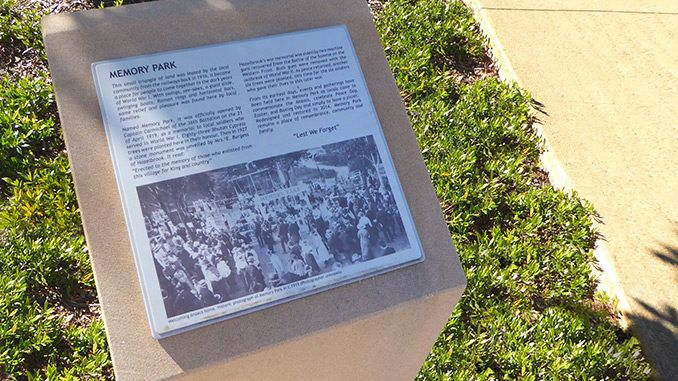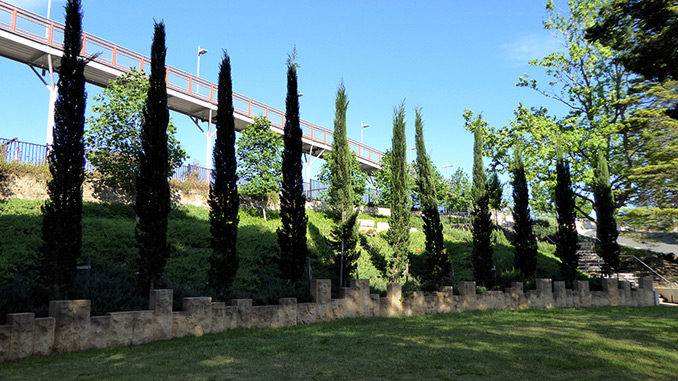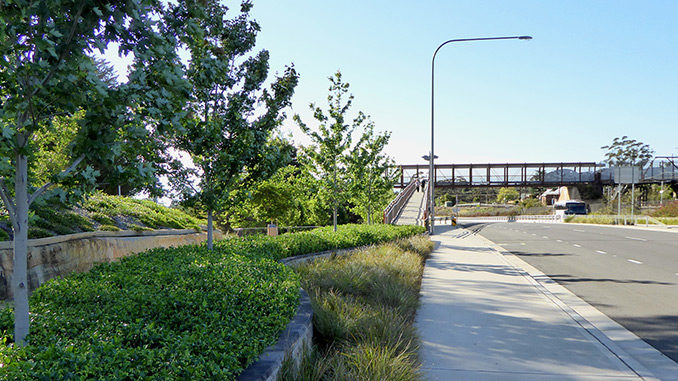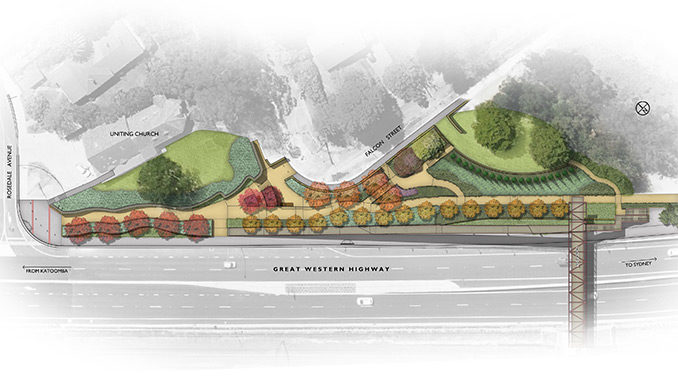Upgrading of the Great Western Highway (GWH) through the Blue Mountains has presented Roads and Maritime (RMS) with one its greatest challenges due to the physical limitations and rich heritage and scenic values along the highway corridor.
The Woodford to Hazelbrook section of the Great Western Highway (GWH) upgrade included restoration of Memory Park at Hazelbrook village. The outcome of the restoration provides an excellent example of how road infrastructure projects can benefit local communities through the creation of high quality public open space.
Memory Park provides an attractive and relaxing local park covering some 3,300 m2 with significant cultural heritage and landscape values. The park allows safe and convenient connectivity between Hazelbrook village centre and adjoining residential areas and schools. A pedestrian ramp along the edge of Memory Park connects to a new bridge over the Highway to provide safe access to the railway station and adjoining residences.
Corkery Consulting was engaged by URS on behalf of RMS to prepare detailed design and document the Park as part of a larger project to upgrade the GWH between Woodford and Hazelbrook.
The cultural heritage values associated with Memory Park included its historic role as the site for annual Anzac Day ceremonies. Although the original war memorial has been relocated to another park the cultural values are acknowledged by interpretive graphics and text.
Challenges created by steep topography addressed through careful urban design with landscape architects working in collaboration with engineers. To deal with the steeply sloping site and provide for universal access the design incorporates an integrated system of ramps, stairs, retaining walls and terraces. Paths and ramps through park form essential routes for residents and school students accessing Hazelbrook village and the pedestrian cycle ramp across the highway to Hazelbrook railway station. Site planning was further complicated by extensive underground services that were accommodated below the paths and ramps running through the park; design of retaining wall footings and drainage needed to avoid conflicts with the services.
Existing mature trees were retained and new plantings of trees, shrubs and groundcovers focused on the cultural landscapes character typical of the Blue Mountains. The species of new trees planted in the park were selected in consultation with Blue Mountains Council and the local community. Tulip tree Liriodendron tulipifera ‘Fastigiatum’ was selected as a feature tree planted as a row along the base of the pedestrian ramp connected to the pedestrian bridge. The columnar form fits the narrow space adjoining the bridge ramp to while maintaining views over the park to the Blue Mountains National Park. The rich golden yellow foliage in autumn creates a memorable feature of the park. Other species include Ornamental Pear and Crepe Myrtle, which provide seasonal blossom flowers in spring and summer.
Research about the heritage values of the park included the acquisition of image from the State Library and heritage advice from local expert to provide content for interpretive signage. A curving sandstone wall was constructed to form a memorial arc with a row of 18 Cypress Pines planted alongside the wall to commemorate local soldiers who died in war.
As the landscape matures the newly planted trees are starting to define spaces throughout the park and reinforce the experience of moving through the park or stopping to enjoy the new landscape setting. The connected system of terraces, ramps and stairs provide a diverse range of view opportunities. In addition, the pedestrian ramp connected to a new pedestrian bridge over the highway provides an interesting aerial perspective of the park. Visitors can experience diverse and constantly changing views as they move through the park and enjoy panoramic views from the ramp and bridge lookout.
Completed in 2014 the restoration of Memory Park was extended when the highway upgrade contractor went into liquidation. Local residents were understandably anxious to ensure that Memory Park was completed as soon as possible. The park design successfully responded to the outcome of consultation with the local community and Blue Mountains City Council. The letter of support from Council included in this submission confirms that the expectations of the local community have been successfully met.
Replacement of pedestrian level crossing with a new bridge over the highway that is connected to the park by a universal access ramp has eliminated traffic accidents involving pedestrians and cyclists with highway traffic.
A feature of the comprehensive site analysis was the creation of a 3-D computer model that was used to assist the design process to deal with the challenging topography and assist in explaining the park design during community consultation. Visualisation and design of this public open space as part of a major road infrastructure project is an example of the increasingly significant area of work for landscape architects.
Restoration of Memory Park is making a significant contribution to a healthy, inclusive and robust Hazelbrook community by providing safe and convenient pedestrian and cycle access through the park for residents and local school students connecting to Hazelbrook village centre and railway station via the new pedestrian bridge over the highway. The park also provides emotional benefits for users through connection to nature and the opportunity to sit and contemplate or socialise.
Memory Park now makes a significant contribution to the local economy by providing safe and convenient connectivity between Hazelbrook commercial centre, the railway station and adjoining residential areas.

